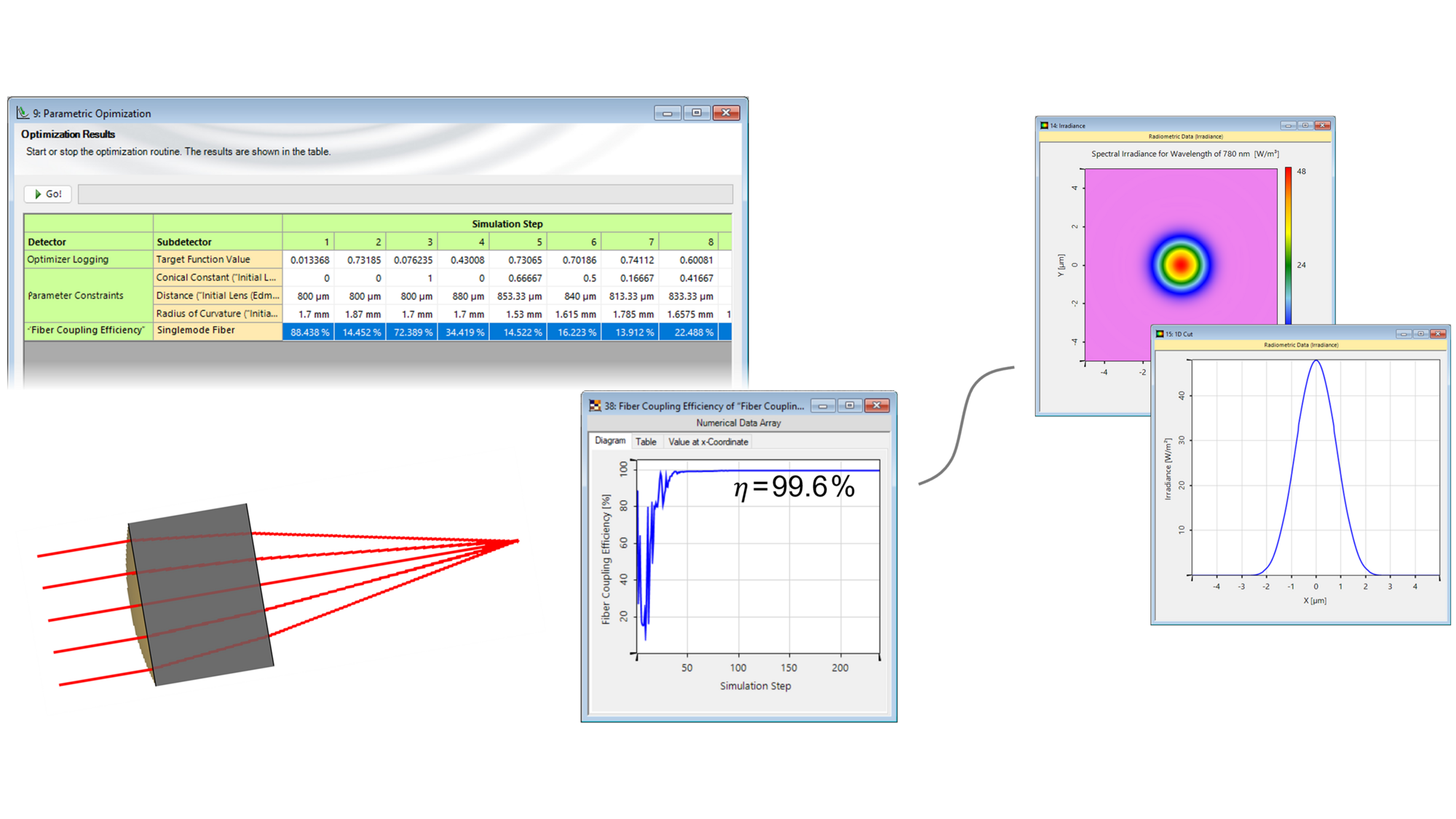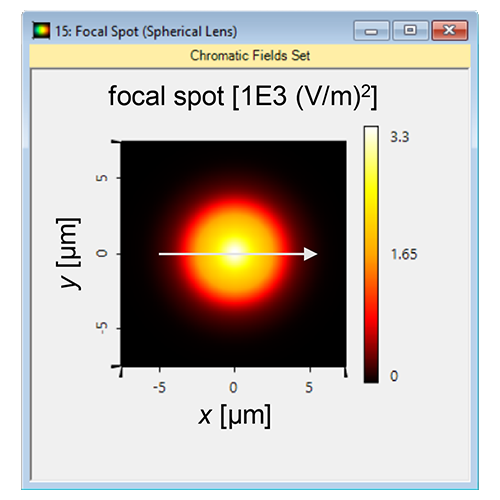Parametric Optimization of Fiber-Coupling Lens
Abstract
Fibers are some of the most versatile components in modern optics. One of their most valued characteristics is their capacity to transport optical energy with very low losses across vast distances (even several kilometers). On the flip side, coupling light into a fiber in a way that achieves as high an efficiency as possible is often a very delicate endeavor: among other things, the fiber coupling lens must be well designed to ensure that the focal spot matches the propagating modes of the fiber as closely as possible. With the fast physical optics simulation and the parametric optimization in VirtualLab Fusion, we show the design of a plano-convex lens with a conical surface for the task of coupling light into a single-mode fiber.
VirtualLab Fusion Configuration
-
 VirtualLab Fusion
VirtualLab Fusion




